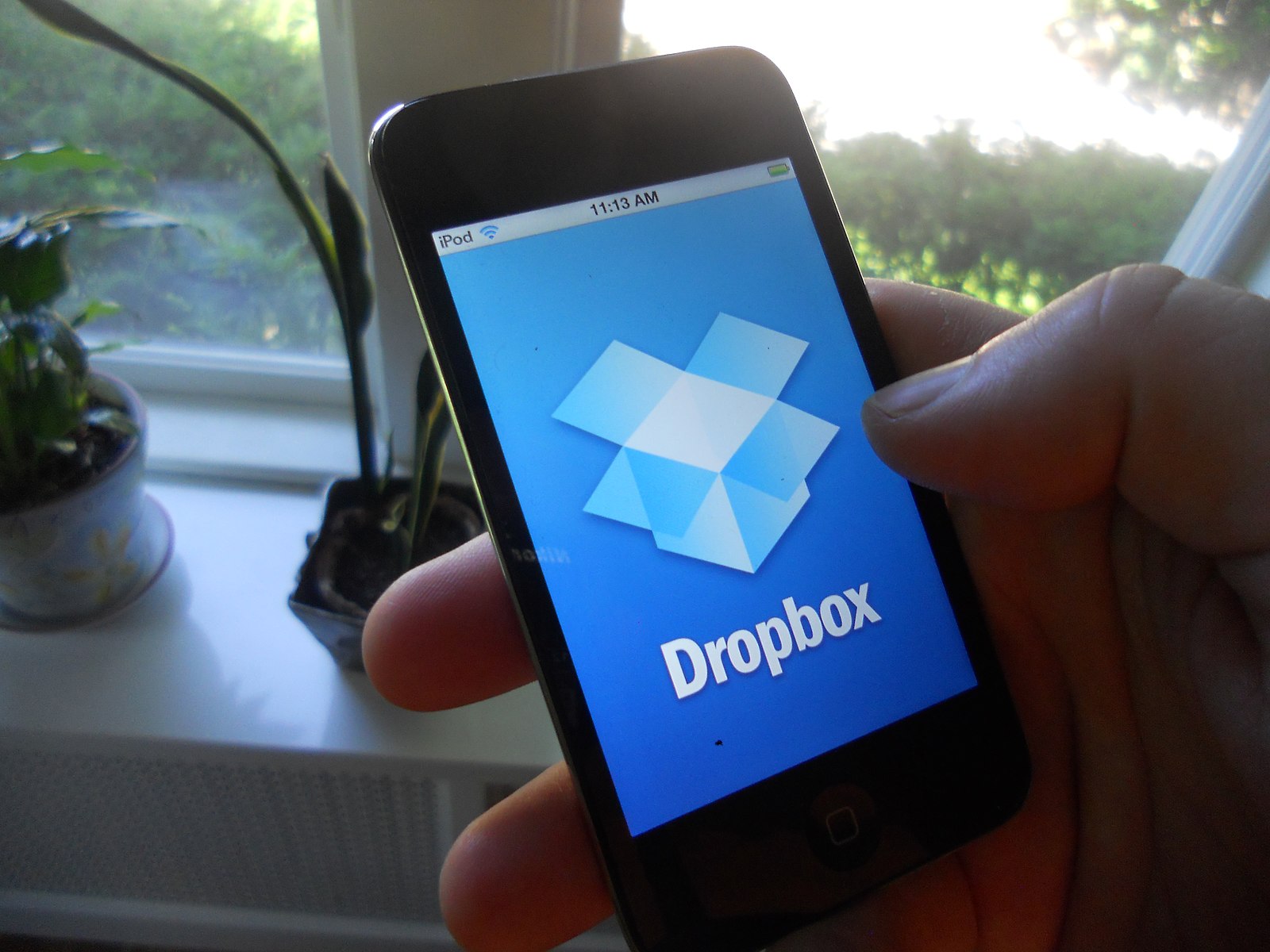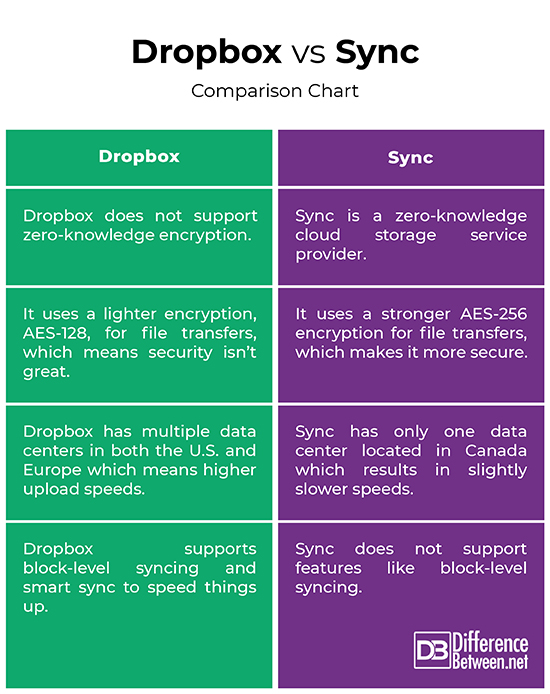Difference Between Dropbox and Sync
Cloud computing is one of the hottest buzzwords in the computing industry these days. It started as an idea and now it represents the latest evolution in the computing world. It completely changed the way companies store their data and use technology to service customers and suppliers. Today, almost all the big names in the business world, such as Google, Microsoft, Amazon, etc. have most of their IT resources in the cloud. There are like a dozen of cloud services that fall under the umbrella term cloud storage and many of us conveniently call them cloud storage, virtual drive, file storage, and so on. Dropbox and Sync.com are two of the most popular and widely used cloud storage options out there. We take a look at each one of them and highlight some key differences between the two to know which one’s better.

What is Dropbox?
Dropbox is a popular cloud storage service operated by the company of the same name, Dropbox, Inc. Dropbox is one of the earliest cloud storage platforms that has brought about the kind of easy to use form of cloud storage that we so adore today. Dropbox is a virtual storage space where you can save all your files and content, such as pictures and videos, and sync them across multiple devices and access them from anywhere you want. It takes all your files for safe storage and moves them into a secured space called cloud. It simply stores all your files in a Dropbox folder which can be accessed from any device you want. Dropbox was founded as a startup by Drew Houston and Arash Ferdowsi in 2007.

What is Sync?
Sync is a private cloud storage solution built from the ground up to be a viable Dropbox alternative featured with built-in end to end encryption. Sync is a Dropbox like cloud storage platform but with more advanced security features, which really make it stand out. Sync was founded years after Dropbox but it has its own set of distinct advantages, especially when it comes to security and privacy. As it claims, Sync is 100 percent private meaning it allows you to store, access and share files from virtually any device you want without compromising your right to privacy.
Difference between Dropbox and Sync
Pricing
– Dropbox offers 2 GB of storage for free and also offers two storage options, either 2 TB or 3 TB. Each of these can be purchased on monthly basis or annually, with the 2 TB plan priced at around $12 a month and if you opt for the annual plan, that brings it down to roughly $10 a month. The 3 TB plan, called Dropbox Professional, will cost you $16.58 per month and it adds more advanced features like 180-days file recovery, text search in documents, transfer limit up to 100 GB and so much more.
Sync, on the other hand, is hard to beat when it comes to pricing. For starters, it offers 5 GB of free storage compared to Dropbox’s 2 GB. Sync also offers a wide variety of options for both individuals and enterprise users. The basic plan for individuals starts at $8 a month on annual billing for 2 TB of storage and goes up to 4 TB for $15 a month if billed annually. So, sync wins in pricing hands down.
Security
– Sync offers more advanced security features and the best thing about Sync is that it’s 100 percent private which means Sync cannot read or access your files. Your files are protected by end to end encryption which means only you are authorized to access your data and nobody else can access your data, not even Sync. Dropbox does not support zero-knowledge encryption and uses a lighter encryption, AES-128, for file transfers. Although, it means much greater speed and easy access to files, the security is not so great compared to Sync.
File Sharing
– Dropbox certainly has an edge over Sync when it comes to file sharing; it allows you to share using a link on the website as well as directly from the desktop. It also lets you set expiration dates for links and shared files, but only if you had opted for a costly professional plan. Sync also allows you to set expiration dates on shared files, but gives you more control over your files with things like download limits and it also notifies you when there’s an activity on a shared file. You can also set passwords for files and check download stats to see how many times a file has been downloaded.
Dropbox vs. Sync: Comparison Chart

Summary
Both Dropbox and Sync.com are arguably two of the most popular and widely used cloud storage options out there, with each one of them having their own set of pros and cons. For starters, Dropbox is a great cloud storage service when it comes to speed but it’s not that great on the security front. Sync is not that great with speed but it undoubtedly is the most secure cloud storage platform that banks on its strong security and privacy principles, one of which is to always ask for your consent before collecting or disclosing your personal information. Unlike Sync, Dropbox does not support zero-knowledge encryption but it integrates well with numerous third parties which is convenient and helps with certain productivity tasks. At the end of day, it all comes down to your personal preference and which one suits your needs better.
- Difference Between Caucus and Primary - June 18, 2024
- Difference Between PPO and POS - May 30, 2024
- Difference Between RFID and NFC - May 28, 2024
Search DifferenceBetween.net :
 Email This Post
: If you like this article or our site. Please spread the word. Share it with your friends/family.
Email This Post
: If you like this article or our site. Please spread the word. Share it with your friends/family.
Leave a Response
References :
[0]Harkut, Dinesh G., et al. Cloud Computing: Technology and Practices. London, United Kingdom: Intech Open, 2019. Print
[1]Pogue, David. macOS: The Missing Manual: The Book That Should Have Been in the Box. California, United States: O'Reilly Media, 2019. Print
[2]Image credit: https://commons.wikimedia.org/wiki/File:Dropbox_app_(8689427731).jpg
[3]Image credit: https://encrypted-tbn0.gstatic.com/images?q=tbn:ANd9GcRT3BUMX4EkIBJGGzTyWyc2j6IgUxU9OJ0MSA&usqp=CAU

